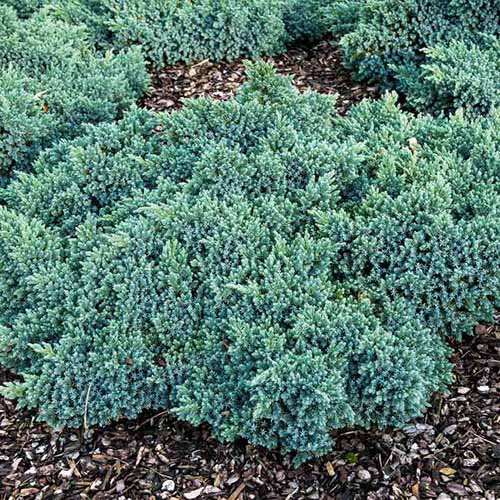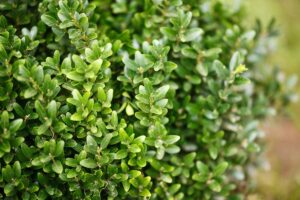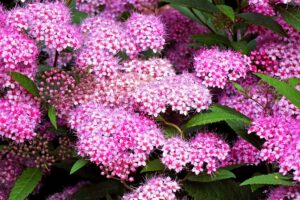Juniperus squamata ‘Blue Star’
The fabulous, unfussy ‘Blue Star’ juniper started out as a happy accident, and thank goodness someone stumbled across it.
Now we’re all lucky enough to be able to use it as a part of our landscaping. The petite, tough shrub positively shines with its distinctive steel blue color. Seriously, it seems to glow.
‘Blue Star’ stays compact, never growing more than three feet tall or so.
With densely-packed needles and a spreading habit, it grows slowly, doesn’t need much water or maintenance, and pretty much does its thing without a lot of input from you.
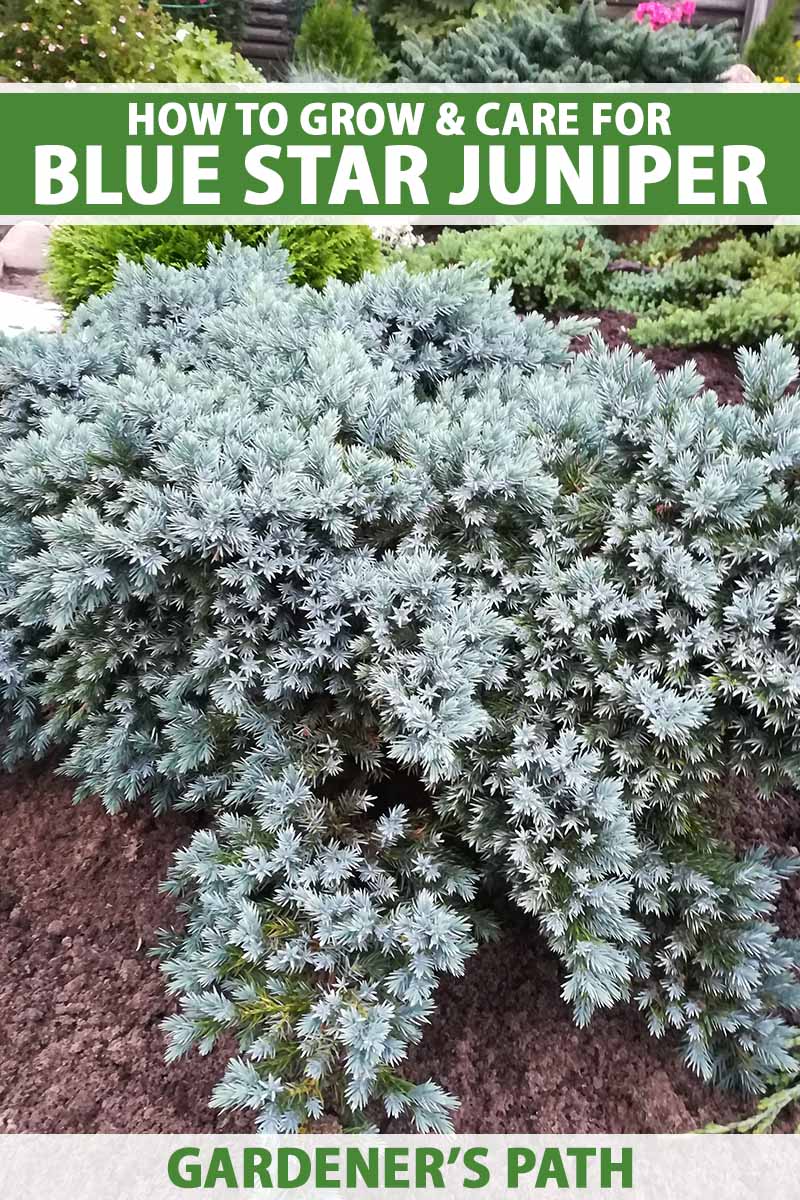
We link to vendors to help you find relevant products. If you buy from one of our links, we may earn a commission.
It’s easy to see why this plant has become one of the most popular junipers of all time in the home garden. If you’re eager to make it a part of yours, this guide can help.
Here’s what we’re going to go over:
What You’ll Learn
Whether this is your first juniper or you just want to add some distinct, evergreen color to your landscape, this plant is the perfect option.
What Is ‘Blue Star’ Juniper?
‘Blue Star’ junipers are a cultivar of the species Juniperus squamata. This species is native to the Middle East, China, and Taiwan.
It’s commonly called singleseed juniper, not to be confused with the oneseed juniper (J. monosperma).
Both produce berries, which are actually modified cones that contain just one seed. Most other Juniperus species produce multiple seeds per berry.
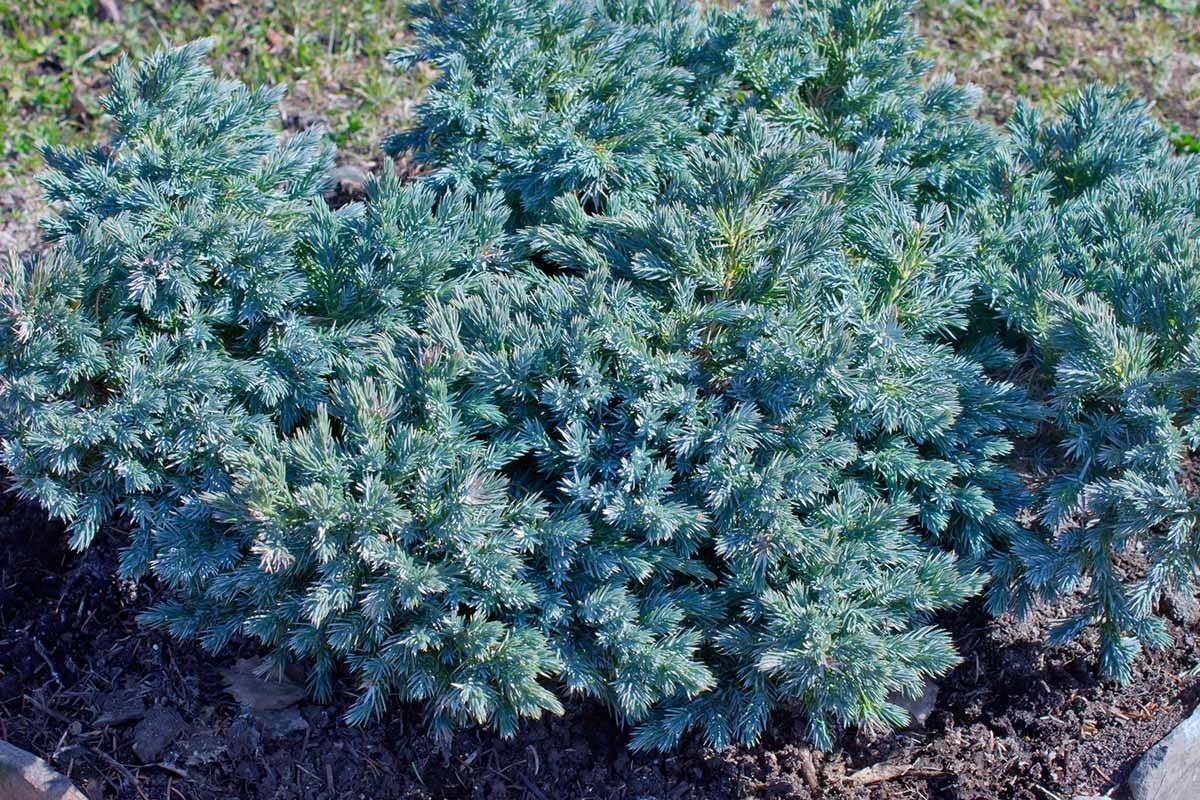
This cultivar is hardy in USDA Hardiness Zones 4 to 8, and it grows up to four feet wide and three feet tall, though it can stay more compact depending on the growing conditions.
If the plant does reach its full size, it takes a long time. It might only grow to be a foot tall after five years, and don’t expect it to reach maturity for at least two decades.
That’s one of the reasons this cultivar has become so popular in home gardens.
Add to that its distinctly steel-blue needles, its low maintenance requirements, its beautiful mounding growth habit, and its resistance to pests and diseases, and it’s no wonder people love it.
Cultivation and History
‘Blue Star’ began as a sport that formed as a witch’s broom on a ‘Meyeri’ juniper. But let’s back up a bit.
‘Meyeri’ was originally introduced into the west after it was collected by Frank Nicholas Meyer, who sampled and brought back plants from eastern Asia in the early 1900s.
This plant grows much larger than ‘Blue Star’ and isn’t as attractive over time because the needles die as the plant ages, though they don’t fall off the plant.
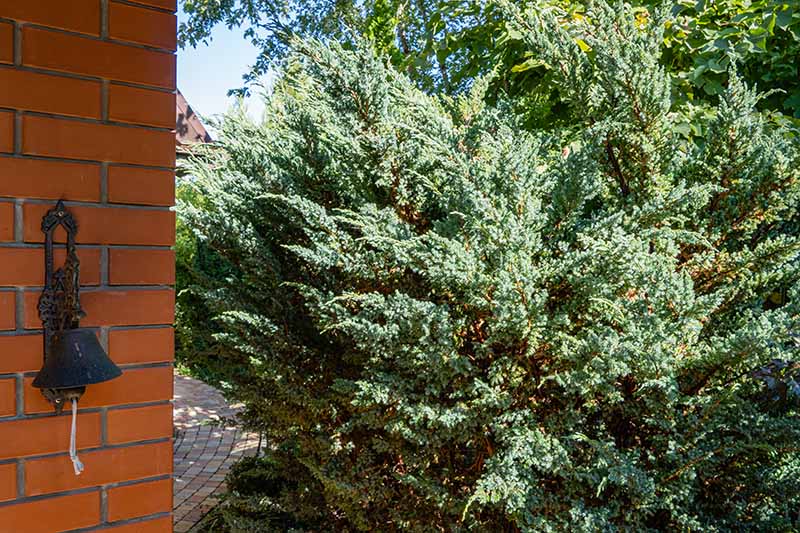
So, while ‘Meyeri’ wasn’t destined to become a hit on the market, it held the genetic key that would unlock a plant that has become a huge hit with juniper lovers.
In 1950, a ‘Meyeri’ plant formed a witch’s broom as mentioned above, which is actually a disease symptom or a genetic mutation that causes a plant to form strange, dwarfed, dense growths.
The growth was clipped and cultivated, and in 1965, A. Hoogeveen of Reeuwijk, Netherlands introduced it to the nursery trade.
Trinomials (that’s just a fancy term for plants that are in a sub-category below species, like varieties or cultivars) of this species are called “flaky” junipers, so you may see this plant labeled as flaky ‘Blue Star.’
Propagation
The only way to propagate a ‘Blue Star’ juniper yourself is through asexual reproduction.
Stem cuttings and air layering are the best asexual propagation method for junipers. Then, of course, you can always plant purchased transplants and saplings.
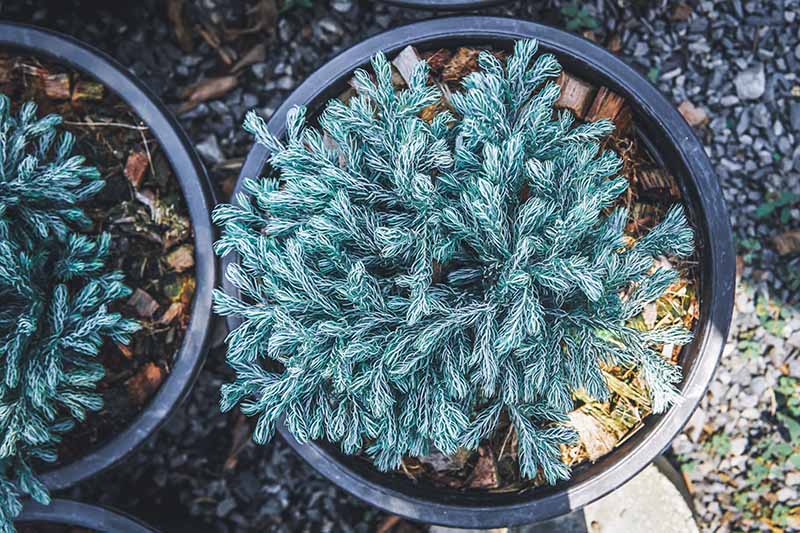
For more details on how to propagate junipers, read our guide for a comprehensive step-by-step explanation of these methods.
From Air Layering
Air layering involves making a cut in the center of a branch and encouraging that section to form roots.
Once roots form, you can cut away the branch and plant it in the ground.
From Cuttings
Rooting cuttings is the process of taking a piece of stem and planting it in the ground or in potting soil.
Eventually, if the conditions are right, the stem will form roots and you can place it wherever you want it to grow permanently.
From Saplings/Transplants
This is the easiest method, and the one that most people choose. It’s also the most expensive. You pay for someone else to do all the propagating work and then you just do the planting.
This involves digging a hole, and placing the plant inside.
How to Grow Blue Star Junipers
Part of what makes this such an excellent garden option is that it grows low to the ground with extremely dense foliage. That means weeds hardly stand a chance.
You might see the occasional long blade of grass poking through, but for the most part, weeds can’t compete.

Plant ‘Blue Star’ in places where you want something low maintenance, in an area where you don’t want to have to deal with frequent weeding.
As with all junipers, avoid planting near species that are susceptible to cedar apple rust, like apples and crabapples.
Soil and Climate Needs
‘Blue Star’ has the same requirements as most juniper plants. They need moderate moisture when they’re young and then very little moisture as they become fully established.
It’s far easier to kill one of these shrubs via overwatering than it is by underwatering.
While we’re on the topic of moisture, ‘Blue Star’ doesn’t tolerate humidity well at all. The humid, hot conditions of the southern United States aren’t ideal.
The plants will probably survive, but they’ll be more prone to diseases and pests.
Plant in a sunny spot, with at least six hours of sun per day. Again, this cultivar can survive in partial sun, but it will likely be more prone to pests and diseases.
Well-draining soil is an absolute must, whereas heavy, poorly-draining soil is a death sentence for ‘Blue Star.’

These plants do extremely well in cold weather and don’t need any extra protection, even during the freezing conditions and heavy snow of winter.
Some people knock the snow off their evergreens, but that’s not necessary with ‘Blue Star,’ since it is so dense and low to the ground. Just let this little wonder take care of itself.
Growing Tips
- Provide moderate water when young.
- Low water needs when mature.
- Plant in full sun.
Pruning and Maintenance
You don’t need to bother with pruning unless you want to encourage bushier growth. For more tips on pruning for bushy growth, read our guide to pruning junipers.
Otherwise, you can trim the tops to keep them a little shorter than they would grow naturally. And always remove any branches that die off.

‘Blue Star’ needs a little feeding when plants are young, and not at all thereafter unless your soil is deficient in any of the main plant macronutrients – nitrogen (N), phosphorus (P), or potassium (K).
Our guide to growing junipers has all the details on when to feed and what type of fertilizer to use.
Where to Buy
If you’re ready to add one of these delightful shrubs to your landscape, our friends at Fast Growing Trees have got you covered.
You can find live plants in two- or three-gallon containers available from FastGrowingTrees.com or in two-and-a-half-gallon containers from Plants by Mail.
Managing Pests and Disease
Junipers are incredibly tough. They rarely face issues with insect pests and herbivores or diseases, as long as you don’t overwater and you plant in full sun with well-draining soil.
But if you have deer in your area, don’t assume that your ‘Blue Star’ is safe. Deer love to chomp on these plants, particularly during the winter or when the plants are young.
Provide some protection in the form of fencing or deterrents.
Rabbits aren’t afraid to take a bite either. Our guide to preventing rabbits from devouring your plants can help you to keep these fuzzy little nibblers out of your garden.
You also need to keep an eye out for aphids, bagworms, scale, webworms, and spider mites, in the insect realm.
When it comes to diseases, cedar apple rust, twig blight, needle cast fungus, and root rot are all potential issues.
Just keep in mind that a plant growing in the right conditions and with the right care will rarely be impacted by these problems. That’s why providing full sun, well draining soil, and not too much water is so important.
Best Uses for Blue Star Juniper
In general, junipers are exceptionally versatile. Beyond the berries and wood, you can use them as a ground cover, for erosion control, or to provide interest in xeriscaping.
‘Blue Star,’ in particular, is perfect for rock gardens or dry, sunny spots where you need a ground cover.
Because it has such a striking color, it’s perfect if you have an area that needs a little livening up, especially during the winter. This beauty provides year-round color.
If you are interested in using the berries of the plant, this might not be the best option. While they are not toxic, they are not known for their edibility. Choose cultivars of J. communis instead.
Quick Reference Growing Guide
| Plant Type: | Woody shrub | Foliage Color: | Steel Blue |
| Native to: | Middle East, China, and Taiwan | Soil Type: | Loamy, sandy |
| Hardiness (USDA Zone): | 4a-8b | Soil pH: | 5.5-7.0 |
| Season: | Year-round color, fall and winter berries | Soil Drainage: | Well-draining |
| Exposure: | Full sun | Attracts: | Birds, deer, mice, rabbits, voles |
| Time to Maturity: | 20 years | Avoid Planting With: | Apple, crabapple, hawthorn, quince |
| Growth Rate: | Slow | Uses: | Bonsai, erosion control, ground cover, specimen, xeriscaping |
| Spacing | 4 feet | Order: | Pinales |
| Height: | Up to 3 feet | Family: | Cupressaceae |
| Spread: | 4 feet | Genus: | Juniperus |
| Water Needs: | Low once established | Species: | Squamata |
| Tolerance: | Drought | Cultivar: | 'Blue Star' |
| Common Pests: | Aphids, bagworms, deer, juniper webworms, rabbits, spider mites | Common Diseases: | Cedar apple rust, juniper twig blight, needle cast fungus, root rot |
Blue Star Juniper Shines in the Garden
All junipers provide year-round color and interest, but ‘Blue Star’ really stands out.
It’s nice that it stays compact, so you don’t have to worry about it taking over a garden or becoming leggy and unattractive like some other species and cultivars will.
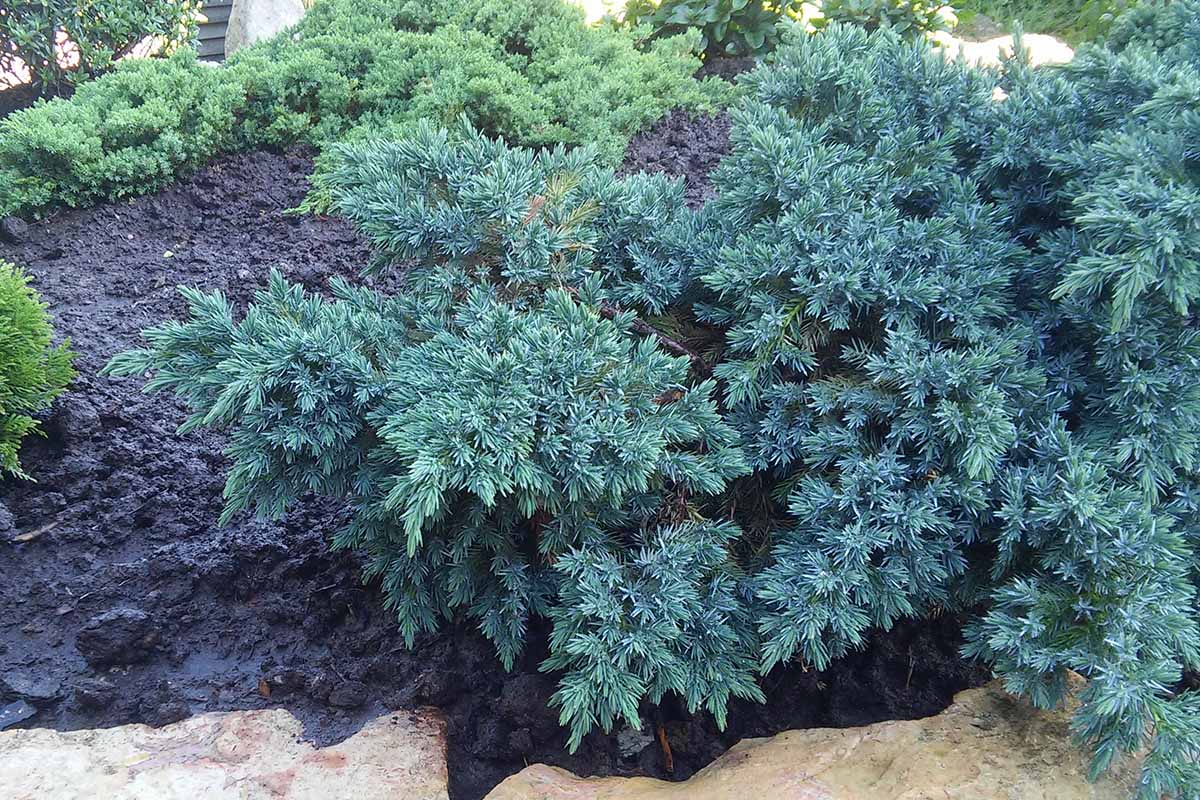
But what really makes it exceptional is the extremely bright steel-blue coloring. Once you’ve seen one in person, you’ll know what I mean. It seems to be lit from within, glowing in the garden like a bright blue beacon.
Let us know in the comments section below what you think of your new addition. Is this your first juniper? If not, what are your favorite Juniperus species?
If you are interested in juniper berries or using them herbally, we have several guides that may be of interest, including:
